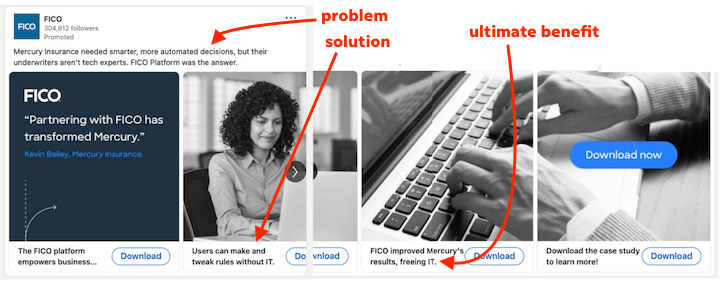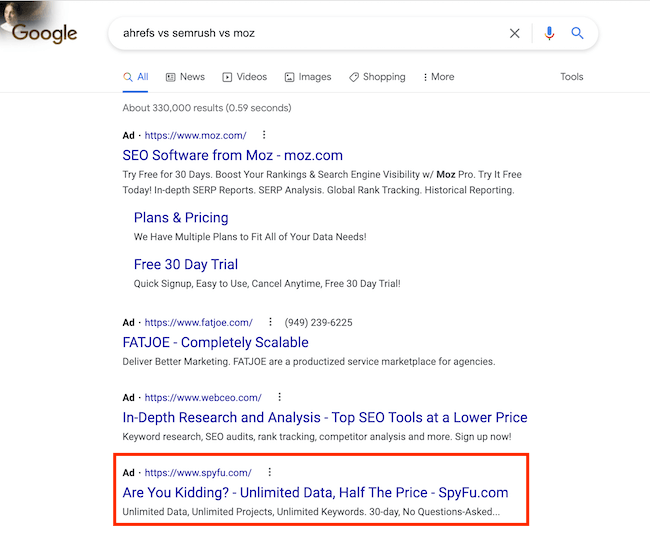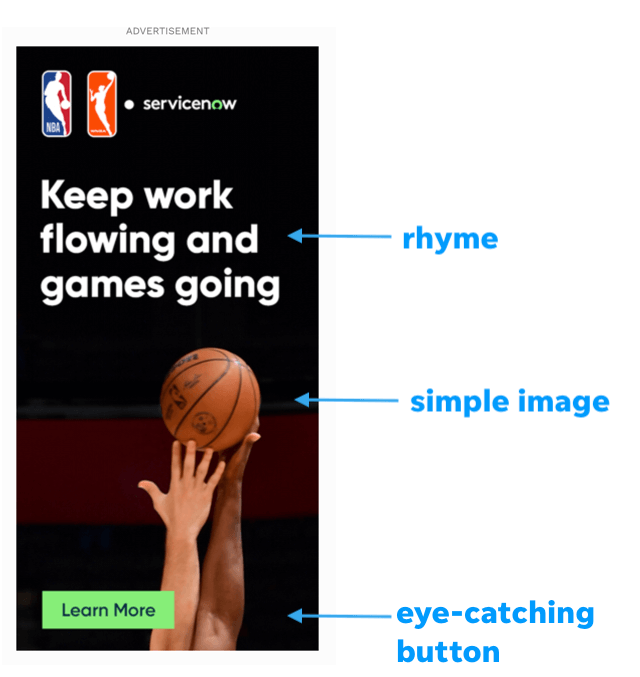Table of Contents
What is an Advertising Copy?
Advertising copy refers to the branded content in advertisements that aim to persuade the target audience to take a specific action. It is the main text you come across in any form of ad, whether it be a billboard, a web banner, a newspaper ad, or a social media post. Some of the key components of an effective advertising copy are:
- Headline
- Subheading
- Body text
- Call to Action (CTA)
- Visual Elements, etc.
Key Takeaways!
- A compelling advertising copy can greatly influence consumer behavior, drive brand awareness, and increase sales.
- The success of an ad largely depends on its ability to engage the audience, making the content of the ad copy essential.
- The tone and style of the ad copy should align with the brand’s voice, helping to establish a stronger connection with the target audience.
Why is Ad Copywriting Important?
Ad copywriting is pivotal for a few essential reasons. It is the interface that connects the brand to its target audience and has the power to influence their perception and decision-making. Well-crafted ad copy written by a professional copywriter can:
- Drive the audience’s attention: A catchy headline or intriguing tagline can make your ad stand out amid the noise, sparking curiosity and encouraging further engagement.
- Evoke emotions: Good ad copy taps into the audience’s emotions, fostering a connection that goes beyond the mere transactional level and lays the foundation for brand loyalty.
- Promote action: With compelling call-to-action phrases, and action verbs, ad copy can steer the target audience towards the desired response, whether it’s making a purchase, visiting a website, or signing up for a newsletter.
Characteristics of a Compelling Ad Copy
An effective advertising copy
- Originality: A compelling ad copy should be unique and innovative. It’s the original ideas and approaches that differentiate one brand from another and capture the attention of the audience in a saturated market.
- Clarity: An effective ad copy communicates the message clearly and concisely. It avoids jargon, confusing language, or complex concepts that could alienate the audience.
- Relevance: The ad copy should resonate with the target audience’s needs, desires, and challenges. It should offer solutions and benefits that align with their lifestyle and preferences.
- Persuasiveness: A strong ad copy uses persuasive language to influence the audience’s decision-making process, encouraging them to take the desired action.
- Consistency: The ad copy should consistently reflect the brand’s voice, image, and values across all platforms and campaigns. This enhances brand recognition and fosters trust among the audience.
Types Of Advertising Copy
- Human Interest Ad Copy: This type of ad copy appeals to the audience’s emotions and feelings. By sharing relatable stories or experiences, human interest ad copy fosters a sense of connection and empathy, making the brand more personable and relatable.
- Educational Ad Copy: Educational ad copies aim to inform and educate the audience about a product or service. By providing valuable insights and information, this type of ad copy positions the brand as a knowledge authority, enhancing its credibility and trustworthiness.
- Reason Why? Ad Copy: “Reason Why?” ad copies focus on explaining the reasons why a consumer should choose a particular product or service. By emphasizing the unique selling propositions and benefits, this type of ad copy encourages the audience to make an informed purchase decision.
- Institutional Ad Copy: Institutional ad copy focuses on promoting a company’s image, values, or reputation, rather than its specific products or services. The goal is to enhance brand recognition and foster a positive perception among the audience.
- Suggestive Ad Copy: Suggestive ad copy uses subtle hints or suggestions to influence the audience’s perceptions or behaviors. By tapping into the power of suggestion, this type of ad copy can steer the audience towards the desired action.
- Expository Ad Copy: Expository ad copy presents facts, features, and benefits in a straightforward, explanatory manner. By being direct and transparent, this type of ad copy builds trust, making it a great choice for audiences who appreciate honesty and directness.
How to write Ad Copy that Sells
Some of the steps of writing ad copy are:
1) Use A Strong Headline
A compelling headline is critical in catching the attention of your target audience. It should convey the unique value proposition of your product or service in a captivating way.
- “Save 50% on your next vacation! Discover uncharted territories with our special travel package!”
- “Let your skin glow! Experience the revitalizing power of our all-natural skincare products!”
- “Double your productivity with our state-of-the-art project management tool – Start your free trial today!”
- “Feeling the midday slump? Energize your day with our nutrient-rich smoothie – First drink on us!”
2) Use Active and Power Words
Active and powerful words evoke strong emotional responses. Words like ‘revolutionary’, ‘breakthrough’, and ‘unleashed’ can make your ad copy more persuasive and compelling. Some of the examples can be:
- “Experience the revolutionary power of our home automation system.”
- “Unleash your potential with our breakthrough fitness program.”
- “Transform your workspace with our cutting-edge organization solutions.”
- “Indulge in the luxury of our handcrafted artisan chocolates.”
- “Elevate your gaming with our ultra-responsive, high-definition console.”
3) Use Statistics
Numbers and statistics add credibility and specificity to your ad copy. They offer concrete evidence about the effectiveness or popularity of your product or service. Some of the ways of using this can be:
- “Over 1 million satisfied customers and counting!”
- “Rated #1 by top industry experts.”
- “95% of our clients reported significant improvement after using our services.”
- “Our product has been proven to increase sales by 50% in just 3 months.”
4) Use Social Proof
Social proof, such as testimonials or reviews from satisfied customers, can greatly enhance the persuasive power of your ad copy. It fosters trust and reassures potential customers of the value of your offering. You can use it in the following ways:
- “Don’t just take our word for it – hear what our happy customers have to say.”
- “Join the thousands of satisfied customers who have transformed their lives with our product.”
- “Our impressive 4.5-star rating on Trustpilot speaks for itself.”
5) Address Customer Pain Points
Understanding and addressing the pain points of your target audience is key in creating an effective ad copy. Show them how your product or service can solve their problems or satisfy their needs. The following examples showcase how to do it effectively:
- “Tired of feeling stressed and overwhelmed? Our program will help you find balance and inner peace.”
- “Struggling to keep your space organized? Let our solutions simplify your life.”
- “Are you a chocoholic looking for guilt-free indulgence? Look no further than our artisan chocolates made with all-natural ingredients.”
6) Use FOMO
FOMO – Fear Of Missing Out, can be a potent tool in your ad copy. Limited-time offers or exclusive deals can create a sense of urgency and spur immediate action. Here’s how you can use it:
- “Hurry, our sale ends in 24 hours! Don’t miss out on the chance to save big.”
- “Only a few seats left for our highly sought-after workshop. Secure your spot now before it’s too late.”
- “Join our exclusive membership program and get access to limited-time promotions and discounts.”
7) Use A Consistent Tone
Maintaining a consistent tone throughout your ad copy is vital. It ensures coherence and helps strengthen your brand voice. Consider the following factors when determining your tone:
- Target audience: Are they young and vibrant, or more mature and sophisticated?
- Type of product/service: Is it playful and fun, or serious and professional?
- Brand personality: What vibe do you want to project?
8) Consider Design Elements
Visual elements like colors, fonts, and layouts can significantly affect the readability and attractiveness of your ad copy. Ensure they align with your brand image and enhance the readability of your content. Here are some tips:
- Use colors that convey emotions: Red for urgency, blue for trustworthiness, and green for nature and health.
- Choose fonts that are easy to read at different sizes and avoid using too many different styles.
- Utilize white space to make your copy less cluttered and more visually appealing.
9) Always Include A CTA
A strong call-to-action (CTA) guides your audience towards the next step. Be it ‘Buy Now’, ‘Sign Up’, or ‘Learn More’, ensure your CTA is clear, catchy, and action-oriented. Here are a few examples:
- “Shop now and get 20% off your entire purchase.”
- “Subscribe to our newsletter and never miss out on our latest deals and updates.”
- “Call us today to book your free consultation.”
10) Be Creative And Engaging
Ads can easily blend in with the endless stream of content people see daily. Therefore, it’s essential to make your ad stand out. Be creative and use engaging language that captures your audience’s attention. Consider these ideas:
- Use humor or wit to add personality to your ad.
- Tell a story that connects with the emotions of your target audience.
- Incorporate visuals, such as images or videos, to make your ad more compelling.
11) Do Testing
Testing and evaluating the effectiveness of your ad copy is crucial. Use A/B testing to understand what works best for your target audience. Make small changes and observe how they impact your click-through rates, conversions, and overall success. Here are some elements to test:
- Headlines: Test different headlines to see which one grabs more attention.
- CTAs: Experiment with different phrases or words for your call-to-action.
- Visuals: Try different images or videos to determine what resonates best with your audience.
12) Keep Your Copy Simple
Simplicity is key in writing effective ad copy. It should be easy to understand, yet powerful enough to motivate the audience to take action. Keep your sentences short, your language clear, and your message concise. Avoid using technical jargon or complicated phrases that may confuse your audience. Some of the ways to simplify your ad copy are:
- Use simple, everyday language that’s relatable to your audience.
- Focus on one main message or call-to-action in each ad.
- Highlight the benefits rather than listing features.
Great Ad Copy vs. Bad Ad Copy
The difference between great and bad ad copy can dramatically impact the success of marketing campaigns, whether traditional print advertising or modern digital and social media ads.
A well-crafted advertising copy can elevate your marketing strategy, significantly enhancing the effectiveness of both online and print ads. Conversely, a poorly constructed copy can lead to disengagement and lost opportunities.
| Criteria | Great Ad Copy | Bad Ad Copy |
|---|---|---|
| Engagement | Utilizes compelling language and visuals to captivate the audience. | Lacks engaging elements, failing to grab the audience's attention. |
| Clarity | Delivers a clear message with simplicity and avoids technical jargon. | Contains complicated phrases or technical language that may confuse the audience. |
| Relevance | Addresses the needs and concerns of the target audience. | Fails to resonate with the target audience's needs or concerns. |
| Action Orientation | Includes a strong and clear call to action. | Lacks a clear call to action, leaving the audience unsure of the next steps. |
Examples of Ad Copy
Some of the ad copy examples that will help you learn writing advertising copy to target prospective customers and convince users are:
1) LinkedIn ad copy example
Some of the key points of this ad are:
- The LinkedIn ad presents a concise, compelling message that immediately highlights the value proposition.
- To encourage user engagement, it uses actionable language combined with an inviting visual design.
- The copy is tailored for a professional audience, respecting the context of the LinkedIn platform, and driving relevance.
2) Google ad copy example
Key highlights of this ad are:
- Use phrases your ideal customers would say
- Find a way to resonate with them
- Connect through relatable words or expressions
3) Display ad copy example
A few key highlights of this ad are:
- Less can be more
- Large font, appealing image, and bright CTA button
- Click-inviting
- Rhyming adds memorable power
Conclusion!
To wrap it up, creating compelling advertising copy is a subtle art that requires precision, relevance, and a clear call to action. Remember, you’re not just writing; you’re strategically communicating to persuade your audience.
FAQs
1) What should my advertising copy include?
A good advertising copy should include:
- The objective of the copy
- The target audience
- The benchmark
- The advertising channel.
2) How to Create Facebook and Instagram ad copy?
While writing copy for Facebook and Instagram, follow these steps:
- Know your target audience
- Write for the platform and placement
- Create a hook or use power words in your ad campaigns
- Keep it short and simple
3) How can I make my ad copy resonate with my target audience?
To create ad copy that resonates with your target audience, consider the following tips:
- Understand the needs and concerns of your target audience
- Use language and tone that they can relate to
- Highlight the benefits or solutions your product/service offers
- Use testimonials or social proof to build trust and credibility
4) Where can I use an Ad Copy?
A few ways an ad copy can be used are:
- Traditional ad copy in print
- Social media advertisement
- Ad copy for the sales page
- Email campaign ad copy
- Native advertising
5) What is the importance of advertising copy in digital marketing campaigns?
From online ads to email campaigns, advertising copy plays a crucial role in digital marketing. It can:
- Grab the attention of potential customers
- Drive conversions and sales
- Build brand awareness and loyalty
- Set your business apart from competitors
Liked this post? Check out the complete series on Advertising



